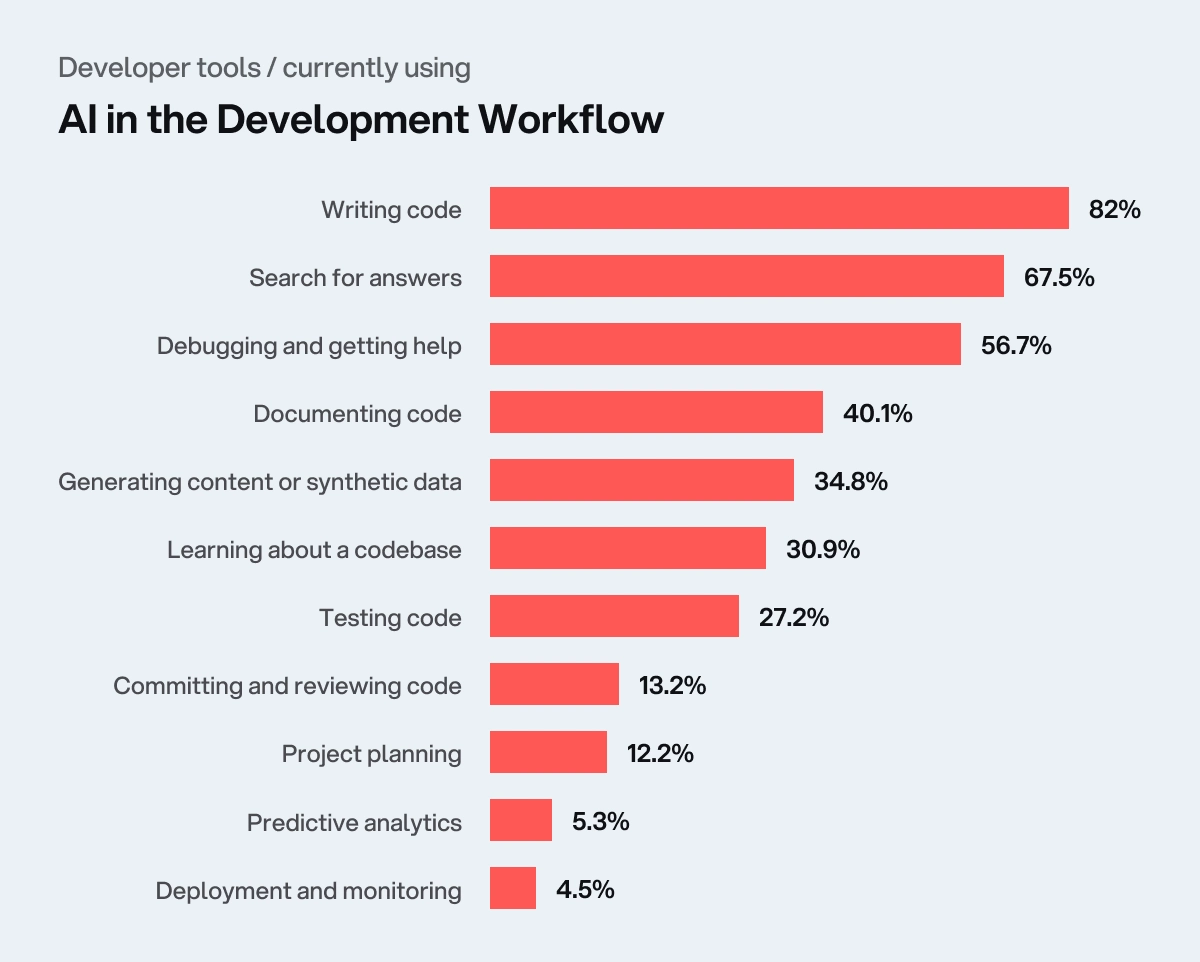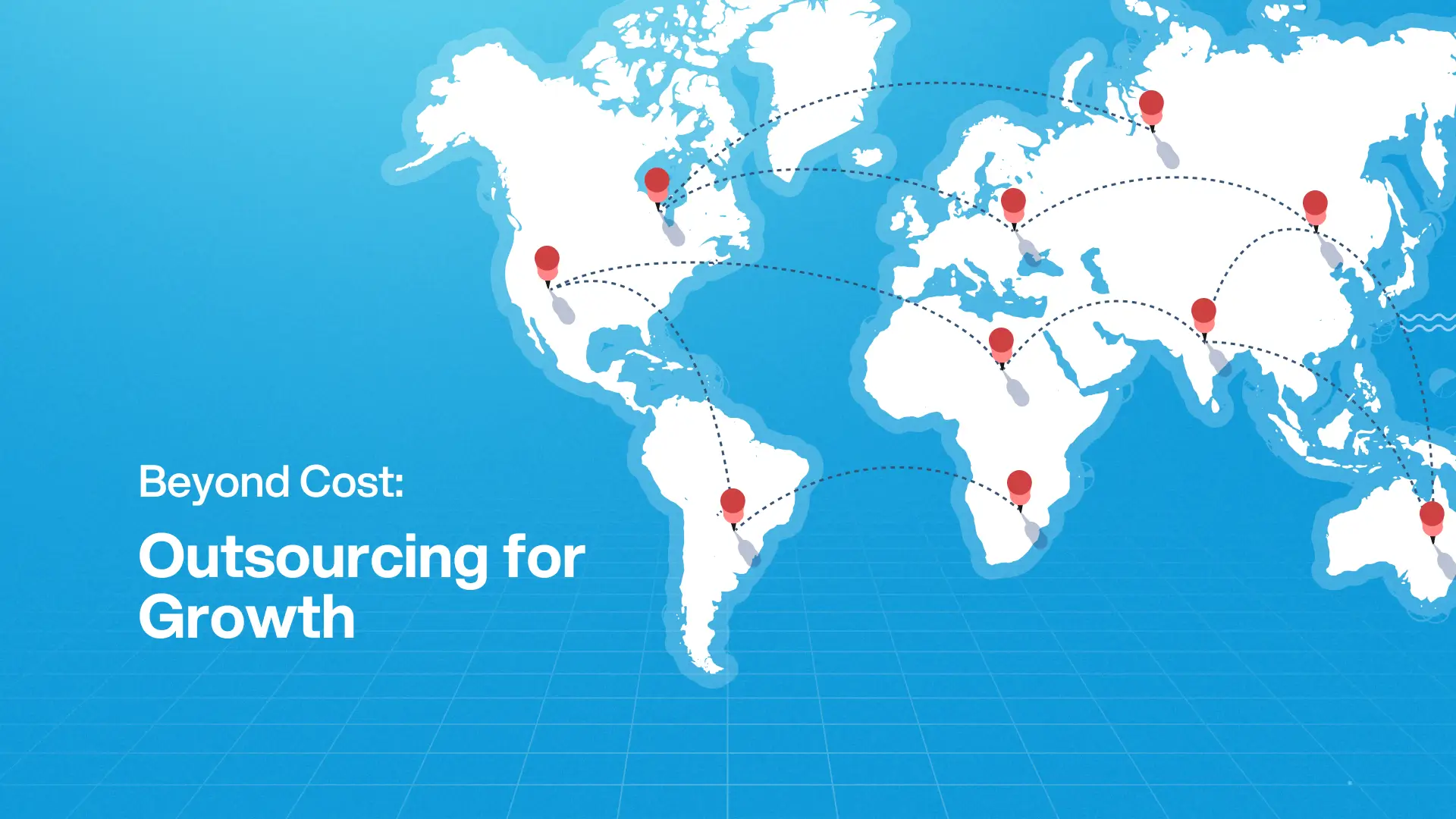Post Activity
 696
696
Table of Content
Share This Post
Table of Content
The 2024 Stack Overflow Developer Survey reports that 4 out of 5 developers now use AI to write or optimize code. Offshore teams are rapidly adopting this trend to improve velocity and accuracy. CTOs and other tech leaders are using offshore web development not just to hire more talent, but to move faster, use AI tools, and build flexible teams.
Scope of Offshore Web Development Services
Offshore web development means outsourcing projects to a third-party provider in another country, often a different continent. It differs from onshore (same country) and nearshore (neighboring country) outsourcing primarily in terms of geographical distance, time zone differences, and cultural diversity.
The scope of offshore web development is broad and can encompass a range of key services. The following table outlines the most common offshore services in demand across the world.
Some offshore partners also offer value-added services such as project management, quality assurance, legal and administrative support, and infrastructure management, ensuring a comprehensive and seamless development process.
Offshore web development partnerships enable businesses to leverage global expertise, reduce costs, and accelerate project delivery while focusing on core competencies.
Thinking of Outsourcing?
Access a wide range of outsourcing companies and find your best fit.
Benefits of Offshore Web Development
Offshore web development shares common benefits with any offshore development. Let’s quickly review the advantages of offshoring specifically in the context of web development. Together, these benefits make offshore web development a strategic choice for businesses aiming to optimize costs, access top talent, accelerate delivery, and maintain competitive advantage in a dynamic market.
1. Cost Efficiency
Offshore development significantly reduces costs by leveraging lower labor rates in regions like South Asia, Southeast Asia, and Eastern Europe. Savings can range from 40% to 70%, allowing companies to optimize budgets and invest resources elsewhere.
2. Access to Global Talent
Offshore development provides access to a vast, diverse pool of skilled professionals with expertise in various technologies and industry-specific solutions. This helps overcome local talent shortages and brings fresh ideas and innovation to projects.
3. Scalability and Flexibility
Companies can easily scale teams up or down based on project needs without long-term commitments. This flexibility helps manage seasonal fluctuations, market changes, and project demands efficiently.
4. Faster Time-to-Market
Time zone differences enable a 24/7 development cycle, accelerating project timelines, speeding up bug fixes, and enabling quicker product launches. This provides a competitive edge by delivering products faster.
5. Focus on Core Business Activities
Outsourcing web development allows businesses to concentrate on strategic goals like marketing, sales, and customer service while experts handle technical tasks. This improves overall efficiency and resource allocation.
6. Access to Advanced Technologies
Offshore developers are often skilled in modern technologies such as AI, blockchain, cloud computing, and IoT, enabling companies to stay technologically competitive without heavy upfront investments.
7. Cultural and Skill Diversity
Offshore teams bring diverse perspectives and approaches, fostering creativity and innovative problem-solving while maintaining strong communication practices to bridge cultural differences.
Challenges in Offshore Web Development
1. Time Zone Differences and Communication Barriers
Language differences, cultural nuances, and time zone gaps often lead to misunderstandings, delays, and errors in project execution. Poor communication can cause project delays, increased costs, and low team morale.
To solve these issues, you can:
- Establish overlapping working hours.
- Use project tools for transparency.
- Plan regular check-ins to maintain alignment.
2. Security and Compliance Risks
Handling sensitive data offshore raises concerns about data breaches, intellectual property theft, and regulatory non-compliance (e.g., GDPR, HIPAA).
You can mitigate these risks by:
- Enforcing strict security policies
- Signing NDAs
- Conducting regular security audits
- Choosing developers with the knowledge of global compliance and security standards.
Ready to Build Your Team?
Let’s create together, innovate together, and achieve excellence together. Your vision, our team – the perfect match awaits.
How Offshore Web Developers Ensure Quality, Security, and Effective Communication
Quality, security, and communication are the three foundational pillars for successful offshore web development partnerships. Offshore providers employ a mix of strategic processes, advanced tools, and best practices to address the unique challenges of working across borders.
Quality Assurance in Offshore Web Development
Managing quality in offshore development is challenging but essential. Poor communication, language barriers, and time zone differences can lead to bugs, delays, and increased costs.
Offshore developers typically implement consistent quality assurance (QA) frameworks and tools across all teams, regardless of location. This includes regular audits, code reviews, and adherence to coding standards to maintain uniformity and reduce defects.
They also ensure quality control through automated testing environments, continuous integration (CI), and deployment pipelines catch bugs early and accelerate development cycles.
Offshore developers establish and maintain quality benchmarks for each project through clear documentation and consistent communication, ensuring successful project delivery. They frequently review their codes to identify and fix issues before they reach production.
Security in Offshore Web Development
Offshore providers secure sensitive data and systems through a combination of measures. They:
- Implement access controls like role-based access and least privilege.
- Utilize end-to-end encryption for data protection.
- Employ multi-factor authentication for system logins, and segmenting networks to contain cyberattacks.
Offshore teams conduct regular security audits and penetration testing to identify vulnerabilities, provide ongoing cybersecurity training to minimize human errors. Nonetheless, they maintain well-documented incident response plans for rapid recovery from security breaches.
Effective Communication
Offshore developers ensure effective communication through several key strategies. They clearly document processes and requirements to reduce ambiguity.
Offshore teams utilize collaboration tools like Slack, Zoom, and Jira for real-time interaction and project tracking. The developers conduct regular meetings and check-ins to keep teams synchronized. They define roles and responsibilities to ensure clarity on tasks and issue escalation, and they make efforts towards cultural alignment to build trust and prevent misunderstandings.
Offshore Web Development Trends in Future
Offshore web development is evolving into a strategic and innovation-focused partnership model. It is powered by AI, advanced collaboration tools, specialized expertise, and strong security measures.
Hybrid and decentralized team structures, cloud-native architectures, and sustainability considerations are shaping the future landscape, making offshore development more agile, efficient, and aligned with global business needs.
1. Hybrid Offshore Models
While traditional offshore outsourcing remains popular, nearshoring and hybrid models are gaining traction as businesses seek improved collaboration and reduced time zone challenges.
The growing trend of hybrid offshore models is reshaping how businesses approach web development outsourcing. This model combines the strengths of in-house teams and offshore teams. It allows companies to maintain local control while leveraging the scalability and cost-effectiveness of offshore development services.
By blending on-site and remote teams, businesses can ensure better collaboration, optimize resources, and accelerate time-to-market.
Hybrid models provide the benefit of retaining direct oversight of critical business functions while leveraging specialized offshore talent. With access to a diverse range of skills and resources, businesses can scale more efficiently and customize solutions to meet evolving demands.
Hybrid offshore models offer the flexibility to adjust resources as needed, optimizing both efficiency and cost. This makes them a popular choice for innovative companies.
2. AI-Augmented Development
Artificial intelligence is becoming integral in web development. AI-powered tools like GitHub Copilot are assisting developers in code generation, testing, debugging, and project management.
AI automation improves efficiency, reduces errors, accelerates delivery, and enables developers to focus on creativity and problem-solving. AI-driven testing frameworks reduce human errors and accelerate release cycles.
According to the 2024 Stack Overflow Developer Survey, 82% of developers use AI to write code. [Source: Stack Overflow]

3. Adoption of Low-Code/No-Code Platforms
Low-code/No-code platforms are transforming offshore web development by enabling users to develop applications with minimal or no coding. While low-code requires some form of coding, no-code platforms require no programming knowledge with the platform allowing users to create apps through visual tools.
Market.us predicts 80% of offshore companies will adopt low-code/no-code platforms within the next decade.
4. Blockchain and Web3 Integration
Blockchain technologies enhance transparency, trust, and automation in offshore collaborations through smart contracts and decentralized autonomous organizations (DAOs).
Web3 empowers decentralized offshore teams to redefine collaboration by eliminating traditional hierarchies.
5. Cloud-Native and Headless CMS Solutions
Cloud platforms such as AWS and Azure become standard for scalable, reliable operations.
The Cloud Services market experienced significant growth, expanding from USD 810 billion in 2024 to USD 1 trillion in 2025. This market is projected to sustain its rapid expansion, with an anticipated Compound Annual Growth Rate (CAGR) of 23.73%, reaching USD 2.90 trillion by 2030.
Headless CMS architectures separate content management from frontend delivery, enabling more flexible and dynamic web applications.
Key Takeaways
Offshore web development continues to evolve as a value-driven model for companies seeking innovation, flexibility, and cost efficiency.
By aligning with the right offshore partner, you can access specialized global talent, speed up project timelines, and maintain competitive agility. Success, however, hinges on mitigating challenges—such as communication barriers and security risks—through strategic planning and modern collaboration practices.
Find Your Perfect Software Outsourcing Partner
Unlock a world of trusted software outsourcing companies and elevate your business operations seamlessly.






